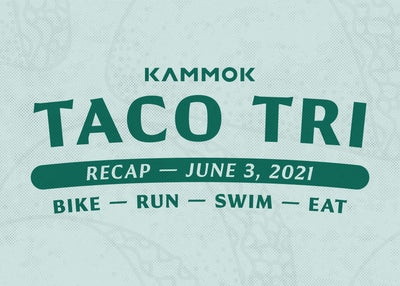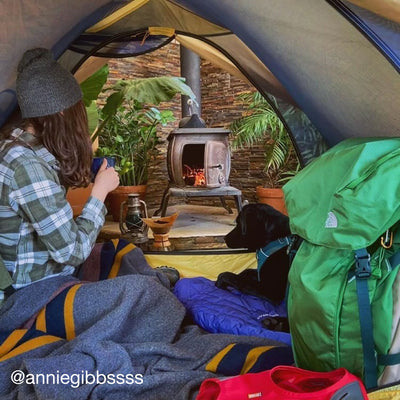5 Big Bend Adventures
People connect with nature in a lot of different ways, but for the most part, there’s a common drive of disconnecting from the modern world in favor of something more primitive. Green spaces in the city are a wonderful midweek holdover, but the throngs of people that are attracted, added with the litter, loud music, and hard to find parking, lead the more adventurous further out. The common goal for a lot of outdoor enthusiasts seems to be finding the least visited places--something that feels untouched, as if it has been this way since the beginning of time. To me, Big Bend is that place.
To get to Big Bend, you really have to want to go there. The closest major airport in El Paso is over 300 miles away, and most Texans are at least a seven-hour drive from the region, if not further. Just because of the sheer distance, the national park is the least visited of any of the national parks. Combine that with it’s over 800,000 acres (not to mention the 300,000 acres in the state park, plus other public lands) and you’re talking about plenty of opportunity to find the escape you’re looking for. There’s no wrong way to explore this park, but any first visit should probably include a trip into the Chisos Mountains where you can hike the Window Trail for something quick and fun, or for a more challenging day check out the South Rim, which many people argue is the best view in Texas.
The places I’m going to describe to you are no secret at all, and in fact, you could argue they are some of the most iconic places to visit in the park. Still, on my fourth trip to the national park, these were places I hadn’t seen and wanted to experience. They definitely didn’t disappoint.
1. Cattail Falls

A quick search for the Cattail Falls trail online will lead you in the right direction for this trail where no official signs point. Around mile marker three on the Ross Maxwell Scenic Drive, a gated road marks the start of this out-and-back day hike. Begin your hike in the desert flanked by ocotillo and lechuguilla, the Chisos Mountains standing tall in front. As the hike ascends, don’t neglect to turn back for incredible views of the mountain ranges back towards Terlingua, including a distant view of the iconic Santiago Peak. The trail follows a ravine covered in sotol plants which bloom to resemble exaggerated cattails. Next drop towards the base of the Chisos Mountains where water from the Window spills over the rocks to form a shallow pool. The falls were really only a trickle when we went in May, but still an incredible thing to see where most of the water in the Chisos makes its final exit.
2. Balanced Rock

Between Panther Junction and the western exit of the park, the Grapevine Hills “improved” dirt road (as NPS calls it) peels north toward the Grapevine Hills Trail. This road is in fact one of the smoother of the back country roads in the park, although by most standards this one is rough (always consult the National Park Service if you’re unsure about your vehicle’s capabilities). The road through the desert is slow, but we saw a cottontail rabbit and a few quail before finishing the six-mile drive. The trail itself is a fairly easy two miler through an exposed laccolith with mounds of gigantic red boulders on every side. The landscape here is unlike anything I had seen elsewhere in the park, and it was a reminder of how geologically diverse this place is. The final ascent to Balanced Rock is short and steep, but well worth the climb, with views at the top in every direction that are well worth unpacking your camera for.
3. Boquillas, Mexico

This isn’t so much a hiking experience as it is a cultural one, but it’s a great reminder of where you are when you visit Big Bend. As much as we want to think of this place as a secluded getaway, this desert is home to a small community just across the river that depends on Big Bend tourism for most of its income. Pack your passport and some cash for this adventure. For five US dollars you can have a boat ferry you round trip across the river. Another five will get you a donkey ride in and out of town, or splurge for a horse at eight dollars. Most of our group were wearing sandals and opted to walk through the cool, knee-deep water in the heat of the day. We paid the fee for the ride into town, and a local guide led us to Jose Falcon’s for cold beer and tacos. There’s no air conditioning here, so it might not seem an obvious choice for a place to escape the heat. However, the high temperatures prevent many people from visiting the town, and once you’re sitting in the shade with a cold drink, you’ll forget about the triple-digit weather.
4. Hot Springs

Visiting the Hot Springs is an ideal way to find some rejuvenation after a few days of hiking around the park, but sitting in 105 degree water might not sound appealing in warmer months. Luckily, the old bath house floor where the hot springs emerge are right next to the Rio Grande, and if you don’t like one temperature, you’ll probably like the other. In the evening, the shallow, warm water was still relaxing, even in the heat of May. Still, we spent most of our time in the cooler river water talking with other park visitors about where they had been and how long they planned to stay. Along the trail down to the river you’ll find historic structures from early settlers of the Hot Springs as well as pictographs on the cliff walls that point to an even more distant past. We had a hard time leaving this spot.
5. Santa Elena Canyon

The road to Santa Elena is long and winding, but man is the drive worth it. On my last trip to Big Bend in February, I spent two nights on the river with six friends, paddling the length of the canyon after being dropped off near Lajitas. On this trip, with lower waters and higher temperatures, we opted for a boomerang trip against the current and back out. You can get a great feel for the canyon by simply hiking the overlook trail, but there’s nothing like paddling the river to find complete seclusion in this place. Paddling upriver in low water proved to be somewhat of a struggle with plenty of boat dragging, but once we passed the end of the overlook trail, we were left completely alone until we paddled out the following day. If taking a canoe against the current sounds miserable, I assure you it’s not. The plus side of having to drag a canoe through mild rapids, while it is tiresome, is being constantly drenched in cool water while the temperatures hover close to a hundred degrees. Plus, with canoes, you can pack plenty of water, food, and ice-cold drinks without worrying too much about weight. We were slightly bummed about news of a full moon that would eliminate any chance at seeing the stars that Big Bend is so famous for. Then as we sat at our campsite with the pale glow creeping up over the top of the canyon walls, we realized sometimes what you get is better in some ways to what you hoped for.
Guest blog by Lawton Cook. @lawton.cook




